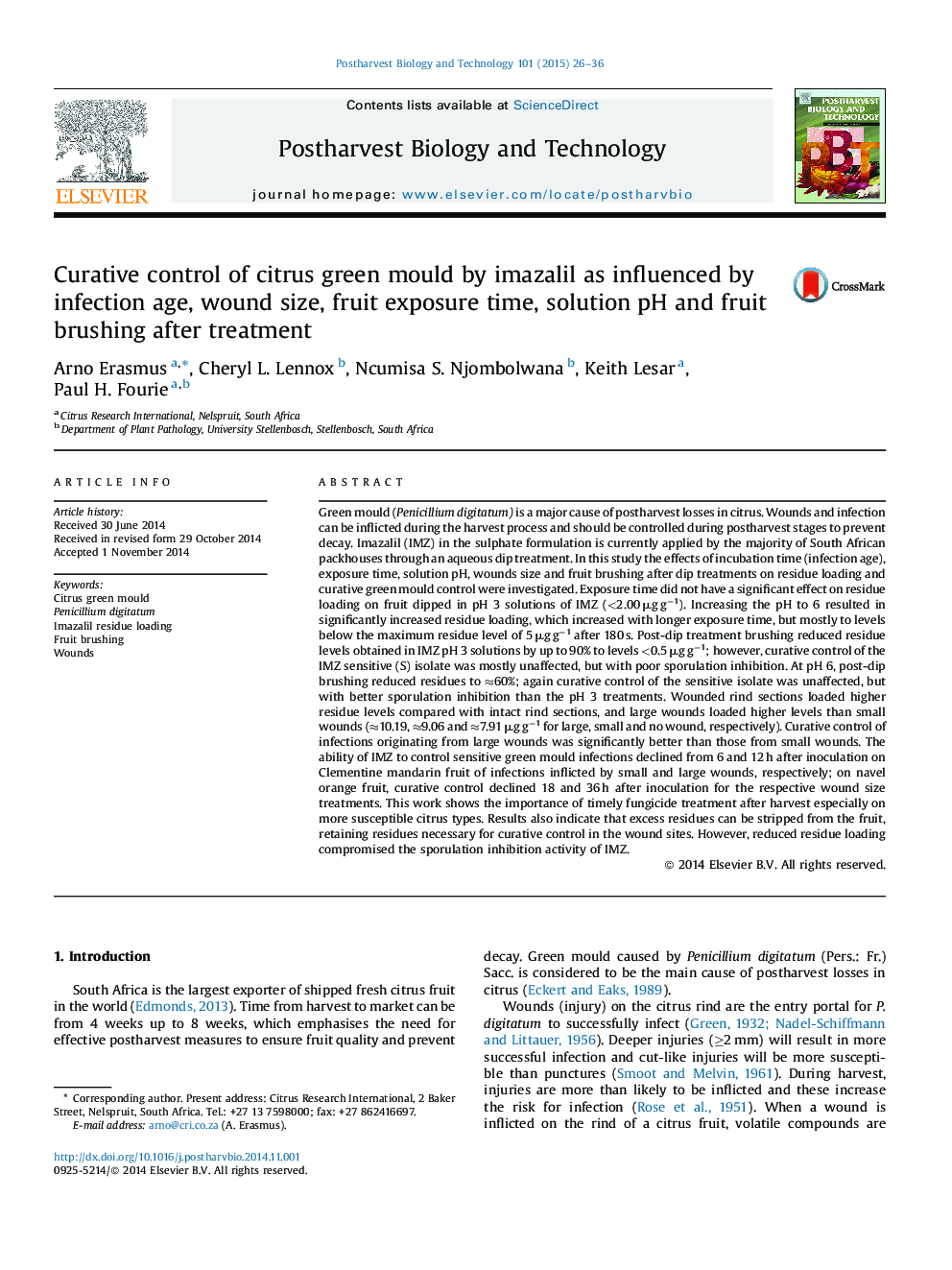| کد مقاله | کد نشریه | سال انتشار | مقاله انگلیسی | نسخه تمام متن |
|---|---|---|---|---|
| 4518039 | 1624993 | 2015 | 11 صفحه PDF | دانلود رایگان |

• Longer exposure times at higher pH levels result in increased imazalil residue loading.
• Brushing after dip treatment reduces potential imazalil residue loading on citrus fruit.
• Curative efficacy of imazalil is reduced with increasing age of green mould infection.
• Larger wounds take up more imazalil compared to smaller wounds.
Green mould (Penicillium digitatum) is a major cause of postharvest losses in citrus. Wounds and infection can be inflicted during the harvest process and should be controlled during postharvest stages to prevent decay. Imazalil (IMZ) in the sulphate formulation is currently applied by the majority of South African packhouses through an aqueous dip treatment. In this study the effects of incubation time (infection age), exposure time, solution pH, wounds size and fruit brushing after dip treatments on residue loading and curative green mould control were investigated. Exposure time did not have a significant effect on residue loading on fruit dipped in pH 3 solutions of IMZ (<2.00 μg g−1). Increasing the pH to 6 resulted in significantly increased residue loading, which increased with longer exposure time, but mostly to levels below the maximum residue level of 5 μg g−1 after 180 s. Post-dip treatment brushing reduced residue levels obtained in IMZ pH 3 solutions by up to 90% to levels <0.5 μg g−1; however, curative control of the IMZ sensitive (S) isolate was mostly unaffected, but with poor sporulation inhibition. At pH 6, post-dip brushing reduced residues to ≈60%; again curative control of the sensitive isolate was unaffected, but with better sporulation inhibition than the pH 3 treatments. Wounded rind sections loaded higher residue levels compared with intact rind sections, and large wounds loaded higher levels than small wounds (≈10.19, ≈9.06 and ≈7.91 μg g−1 for large, small and no wound, respectively). Curative control of infections originating from large wounds was significantly better than those from small wounds. The ability of IMZ to control sensitive green mould infections declined from 6 and 12 h after inoculation on Clementine mandarin fruit of infections inflicted by small and large wounds, respectively; on navel orange fruit, curative control declined 18 and 36 h after inoculation for the respective wound size treatments. This work shows the importance of timely fungicide treatment after harvest especially on more susceptible citrus types. Results also indicate that excess residues can be stripped from the fruit, retaining residues necessary for curative control in the wound sites. However, reduced residue loading compromised the sporulation inhibition activity of IMZ.
Journal: Postharvest Biology and Technology - Volume 101, March 2015, Pages 26–36